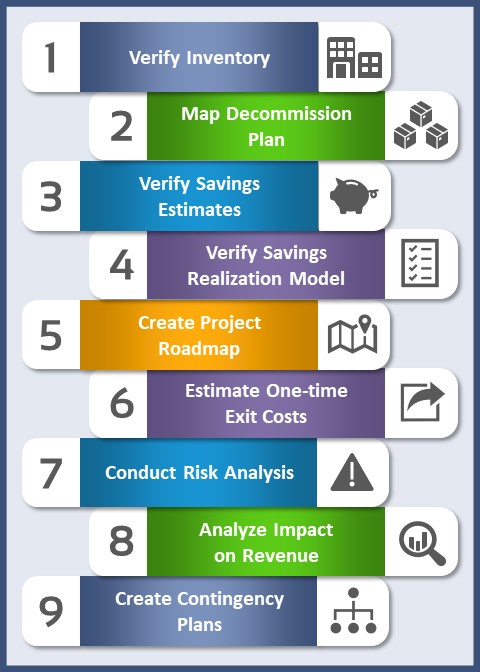Case Study August 6, 2019
Realizing Value in Organizational Consolidation
Trexin helped a global financial services firm drive $25M/year in operational savings.
Business Driver
Our Client, a large multinational financial services firm, was in the process of consolidating several independently operated companies into a new aggregated services group to drive operational savings. The biggest component of that effort involved the consolidation of business applications and their underlying infrastructure, consisting of hardware and software asset migration and decommissioning. To prepare for the consolidation of one of the largest companies, a diversified property and casualty insurer, the Head of Business Operations and COO asked Trexin to verify original program savings estimates, develop a detailed decommissioning plan, and conduct a risk analysis.
Approach
Building upon our extensive experience helping our Clients optimize operations as one of the prototypical contexts for Strategy Execution, Trexin expanded the three requested deliverables into the following set of activities, which were performed over a 12-month period:
- Verify the inventory of impacted infrastructure
- Map the inventory to the application decommission plan
- Verify the original program savings estimates
- Verify the savings value realization model/savings schedule and obtain constituent approval
- Create a project roadmap for the services program exit plan
- Estimate the one-time costs to execute the exit plan
- Conduct a risk analysis with cost impacts
- Analyze the program impact on shared-service revenue
- Create a contingency plan for consolidation problems

Results
Trexin completed the project on-time and on-budget, notably verifying the original program savings estimate of nearly $25M per year, developing a detailed decommissioning execution plan, and completing a comprehensive risk analysis. The original estimate of approximately 500 impacted servers was revised upward to 774 servers upon completion of the more comprehensive inventory, which resulted in a more efficient program closure disposition plan for residual services, costs, and infrastructure.

